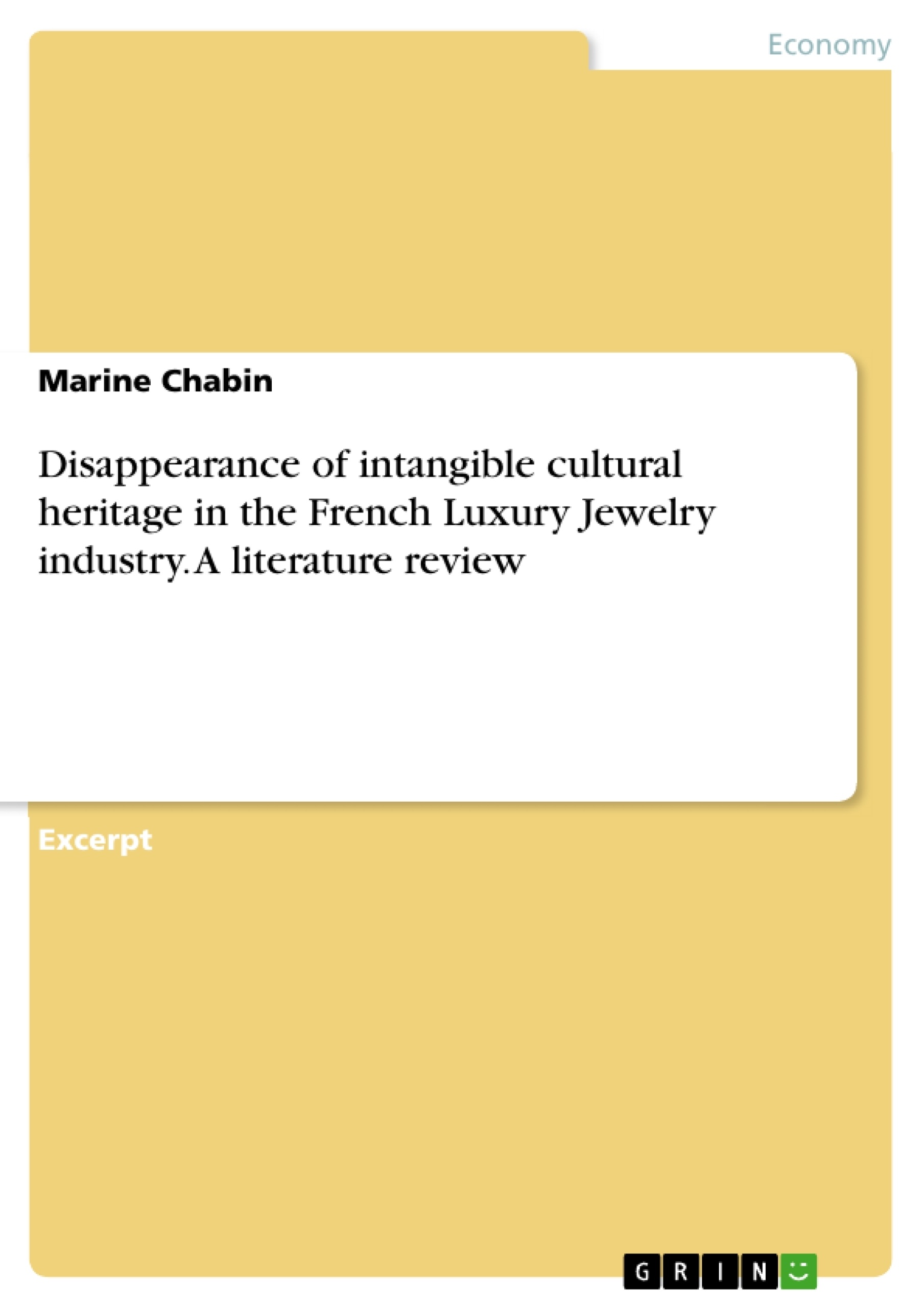Over the past years, it has become obvious to several craftsmen (and non-craftsmen) that some specific crafts and know-hows have been disappearing, especially in various industries such as fashion, glove-making, shoe-making… . These know-hows belong to the cultural heritage of nations, it is a part of their history, in the same way than a prestigious building or an object is. This is why, in response to the growing need for recognition of these know-hows, the General Conference of the United Nations Educational, Scientific and Cultural Organization (hereinafter referred to as UNESCO) decided to qualify properly these knowhows in order for them to be clearly defined and recognized as the part of a cultural heritage.
This qualification allows these know-hows to have a place among all cultural heritages that need to be preserved and cherished. The Convention For The Safeguarding Of The Intangible Cultural Heritage (2003) is the result of the Conference which took place in Paris from 29 September to 17 October 2003 and defines “intangible cultural heritage” as “the practices, representations, expressions, knowledge, skills – as well as the instruments, objects, artefacts and cultural spaces associated therewith – that communities, groups and, in some cases, individuals recognize as part of their cultural heritage. This intangible cultural heritage, transmitted from generation to generation, is constantly recreated by communities and groups in response to their environment, their interaction with nature and their history, and provides them with a sense of identity and continuity, thus promoting respect for cultural diversity and human creativity. [Consideration is] given solely to such intangible cultural heritage as is compatible with existing international human rights instruments, as well as with the requirements of mutual respect among communities, groups and individuals, and of sustainable development.
Inhaltsverzeichnis (Table of Contents)
- Intangible Cultural Heritage
- Métiers d'Art and Know-Hows
- Causes of decline of Metiers d'Art in the Luxury industry
- Lack of succession
- Initial formations
- Lack of information
- Lack of consideration
- Person-Environment Fit Theory
- Person-Organization fit (P-O)
Zielsetzung und Themenschwerpunkte (Objectives and Key Themes)
This thesis aims to explore the disappearance of intangible cultural heritage in the French Luxury Jewelry industry, specifically focusing on the decline of "Métiers d'Art," traditional craftsmanship skills. The study investigates the reasons behind this decline, examining factors such as lack of succession, inadequate training, and societal perceptions of manual labor.
- Intangible Cultural Heritage and its definition
- The decline of traditional craftsmanship ("Métiers d'Art") in the French Luxury Jewelry industry
- Factors contributing to the lack of succession in traditional craftsmanship
- The role of education and training in preserving intangible cultural heritage
- The application of Person-Environment Fit (P-E) theory to understand the challenges faced by the French Luxury Jewelry industry in attracting and retaining skilled craftspeople.
Zusammenfassung der Kapitel (Chapter Summaries)
The first chapter defines intangible cultural heritage and discusses its relevance to the French Luxury Jewelry industry. It highlights the definition of "Métiers d'Art" and its association with traditional craftsmanship skills.
The second chapter explores the causes of the decline of "Métiers d'Art" in the Luxury Jewelry industry. It analyzes the lack of succession among aging craftsmen, the shortcomings in initial training programs, and the societal perceptions that contribute to the decline of manual labor.
The third chapter introduces the Person-Environment Fit (P-E) theory and its application to understanding the challenges faced by the French Luxury Jewelry industry in attracting and retaining skilled craftspeople. It focuses on the sub-category of Person-Organization fit (P-O) and its implications for the industry.
Schlüsselwörter (Keywords)
Intangible cultural heritage, Métiers d'Art, French Luxury Jewelry industry, traditional craftsmanship, lack of succession, education and training, Person-Environment Fit (P-E) theory, Person-Organization fit (P-O), societal perceptions.
- Quote paper
- Marine Chabin (Author), 2017, Disappearance of intangible cultural heritage in the French Luxury Jewelry industry. A literature review, Munich, GRIN Verlag, https://www.grin.com/document/367062



